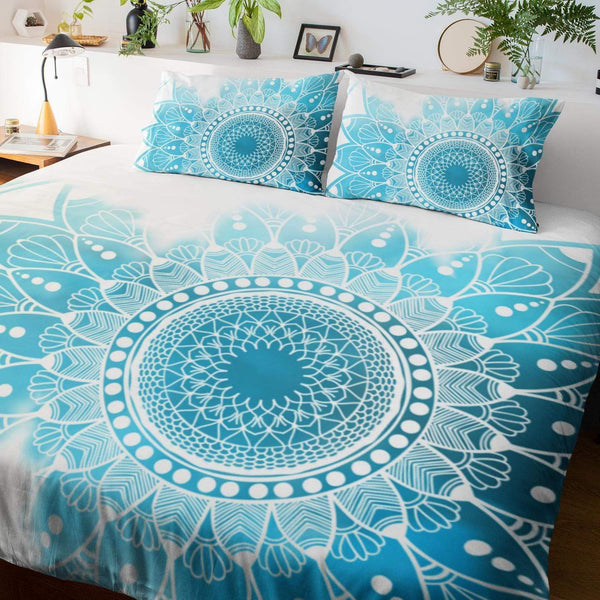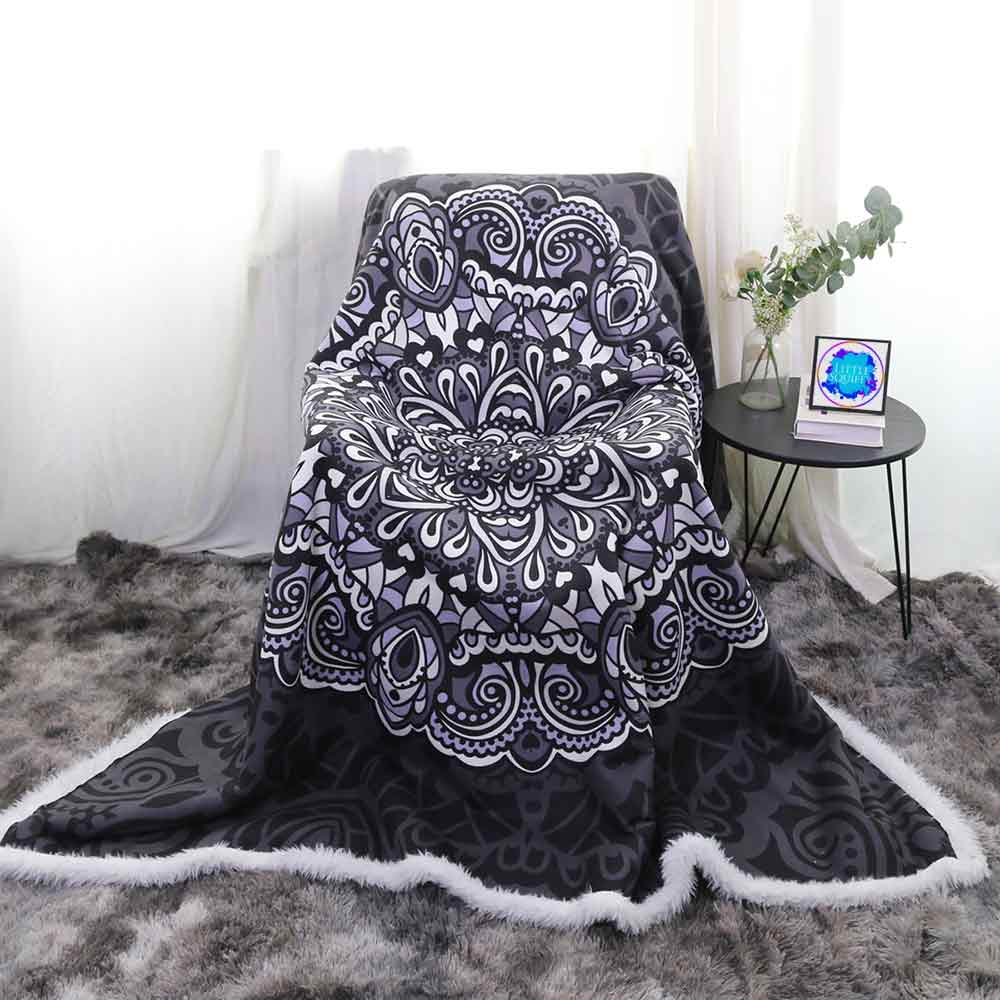Wall tapestries are the most versatile décor you will ever see. Tapestries have a bold way of changing the appearance of a room by adding their vibrant colours to the room. The mandala tapestry is not an exception. They always look great as a wall hanging tapestry or whatever you decide to use it for.
They are very popular among students, as they often use it as blankets, bed covers, wallpaper, and pillowcases for dorm rooms and first apartments. However, only a few people who purchase mandala tapestry have a general understanding of what it means and what it stands for, some just assume it’s some sort of hippie culture or merely a wall hanging tapestry.
Mandala Tapestry: Origin and Definition
A mandala tapestry is a spiritual symbol in Buddhism and Hinduism, and it represents the universe as a whole.
Mandalas were created as a means of organizing the structures of life. It represents completeness/wholeness, and they are an essential symbol for both Hindus and Buddhists. However, in recent years, more people have been exposed to the mandala world, and for a lot of people, looking at mandala brings them peace, and this is one of the reasons mandala wall hanging tapestries are so famous.
So, we’ll take a look at what the mandala tapestry means and what it symbolizes.
Mandala Colours
In Mandala, colours are highly significant and represent different emotions and energies.
Red is often seen as a powerful color in Mandalas, representing energy, strength, and passion. This color is associated with the life force and can evoke strong emotions.
Orange, symbolizing creativity and transformation, is linked with self-awareness and personal growth. It's considered a warm, inviting color that can stimulate feelings of warmth and enthusiasm.
Yellow generally represents learning, wisdom, and happiness. It's associated with the mind and intellect, often used to evoke feelings of joy and optimism.
Green in mandalas is deeply connected to nature and embodies nurturing qualities like care and healing. This color is often used to symbolize good health, love, and psychic abilities, representing a restorative balance in both physical and emotional realms.
Blue in mandalas conveys calmness and tranquility. It is linked to meditation and emotional healing, facilitating a sense of peace and inner serenity.
Purple is utilized to express spiritual awareness and wisdom. It's considered a sacred color in many traditions, often used to encourage deep contemplation or spiritual growth.
Black in mandalas is typically associated with mystery and the deeper layers of the unconscious mind, reflecting profound thinking and introspection.
Pink often seen in lighter shades in mandalas, represents love and compassion, evoking a gentle and nurturing connection to others.
Each of these colours adds a layer of depth and personal connection to the mandala, enhancing its spiritual and therapeutic impact.
Why Do We Hang Mandala Tapestry On Our Walls?
Hanging a mandala tapestry serves as a focal point for meditation. By concentrating on the center of the mandala, one can easily relax and clear the mind. This meditative practice can be undertaken in any serene environment where a mandala is present. Additionally, mandalas are popular in interior decor, providing both aesthetic and spiritual benefits. Next, we'll discuss how to incorporate them into your home decor.
The Main Mandala Tapestry Includes;
Tree of Life: The tree of life on mandala tapestries means life and growth, and each part of the tree has different meanings.
The root means stability or solid ground, while the leaves represent strength and aspirations. The tree of life is often used to represent human being itself; the root means the past, the trunk means the spine, and the branches mean manifestation.
Animals: Animals can be used to symbolize several different meanings depending on the animal used. Because animals are universally known regardless of culture and religion, they are widely used in many modern tapestries.
One popular animal, elephant, symbolizes wisdom.
Labyrinth: Although the labyrinth design was used for historical traditions by the Greco Romans and Native Americans, the pattern remains popular in today’s tapestry trends. The labyrinth represents a path or journey that ended with a wholeness feeling or enlightenment.
Sun: Sun is also a universal symbol. Hence, it represents the universe and often means life, vibrancy, energy, and life.
Heart: Hearts mostly symbolize love and loyalty, but it can also mean life sometimes.
Flower: Flowers symbolizes growth, blossoming, and thriving.
Where To Place a Mandala Tapestry in the House
For some good reasons, the mandala is no longer considered a hippie culture. These beautiful artwork are appealing to our love for symmetry and colours, and with various designs and colour combinations, there is always a mandala tapestry for every person.
While these tapestries can be used in different ways, hanging them on the wall is a great way you and your guests can harness their benefits. Tapestries have long been popular in college dorms, but the market has expanded to include both old and young now.
Mandalas are truly historic artwork that still captures our attention today, and the spiritualism of these artworks speaks to a deeper depth of ourselves that we rarely acknowledge. Introduce a mandala tapestry to any part of your home today, and bring the comfort, healing, and peace of a mandala into the room you need it in the most.
Featuring your favourite colours, symmetry, and essence that you need in your home, Little Squiffy has something for everyone! Introduce the rich history and stunning visual art of the mandala tapestry into your home with one of our beautiful mandala tapestries. The most difficult choice you will have to make is which one you want most!
Inspiring Ideas for Mandala Decor
1. Mandala as a Bedhead Alternative
Consider placing a large mandala tapestry above your bed as a distinctive substitute for traditional headboards. Align it with the bed's width, ensuring it's slightly smaller, and select colors that complement your bedroom decor. Enhance the ambiance with soft fairy lights to create a soothing atmosphere.
2. Mandala Entryway Welcome
Create a calming entry into your home with a mandala painted on the entryway floor. For those who enjoy a bohemian vibe, add candles on the entryway table. A white mandala on timber flooring can offer a striking contrast.
3. Mandala Behind the Sofa
Echoing the bedroom concept, you can also hang a mandala tapestry behind the sofa in the living room. For a varied visual, paint multiple smaller mandalas or, for a less permanent option, hang a framed mandala.


